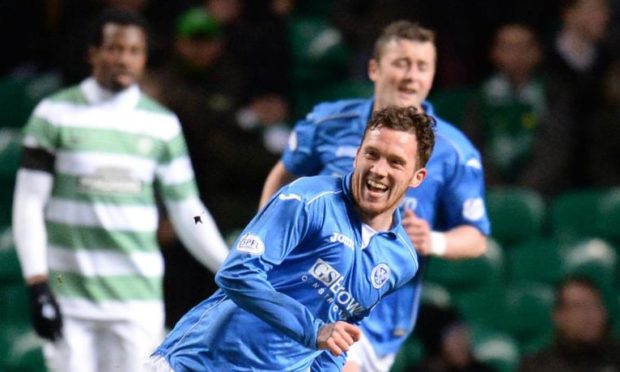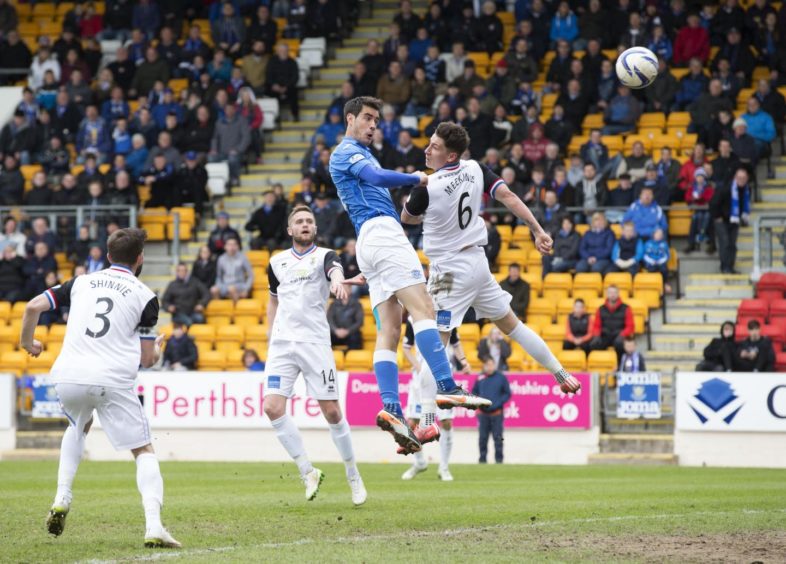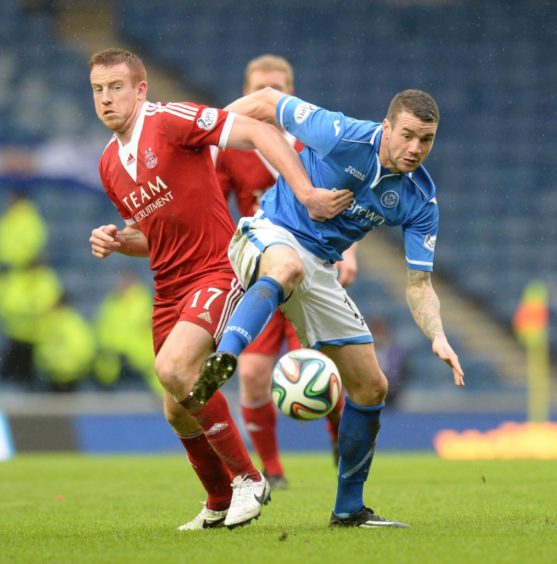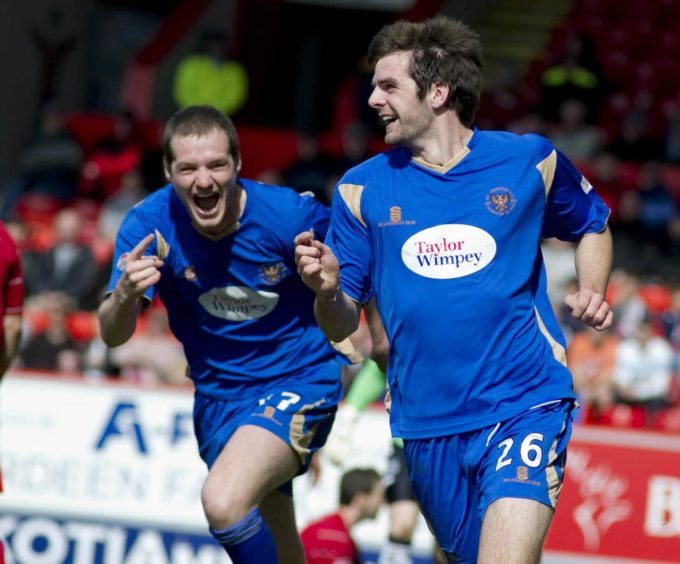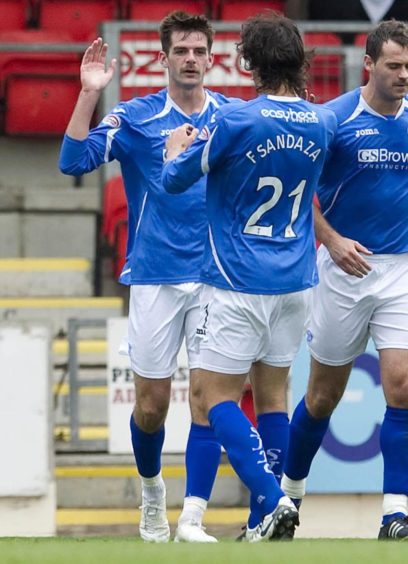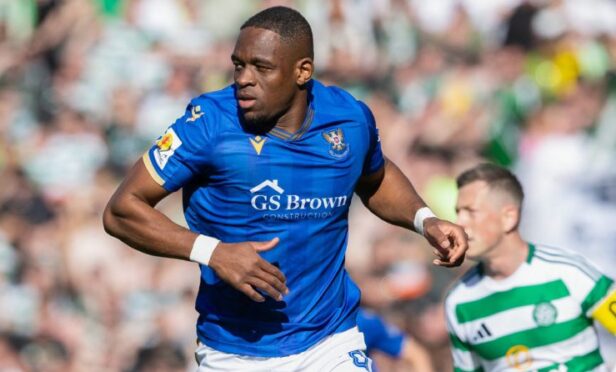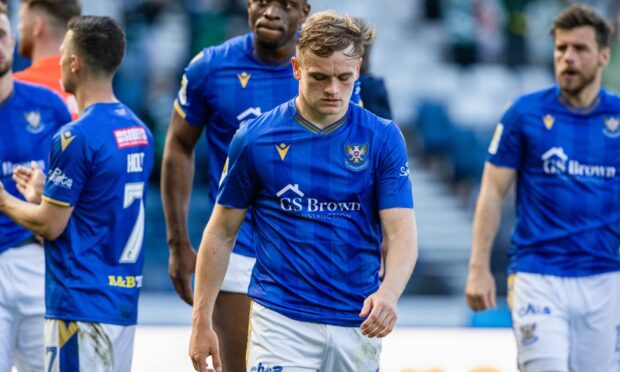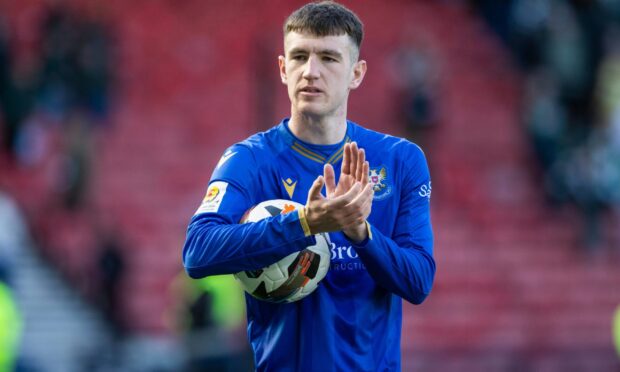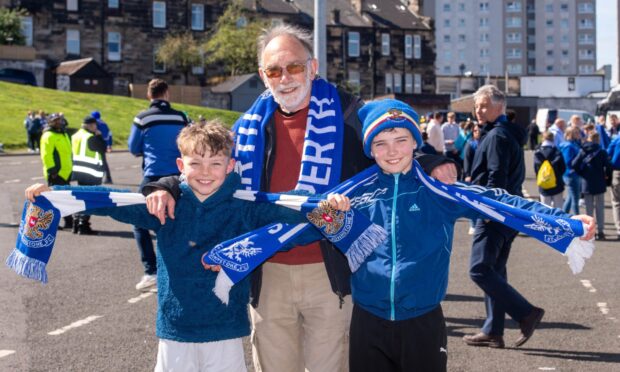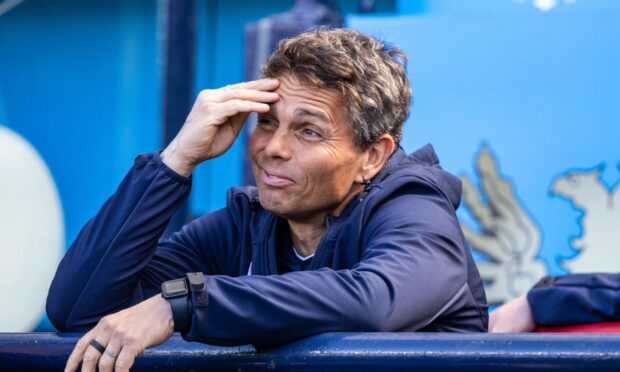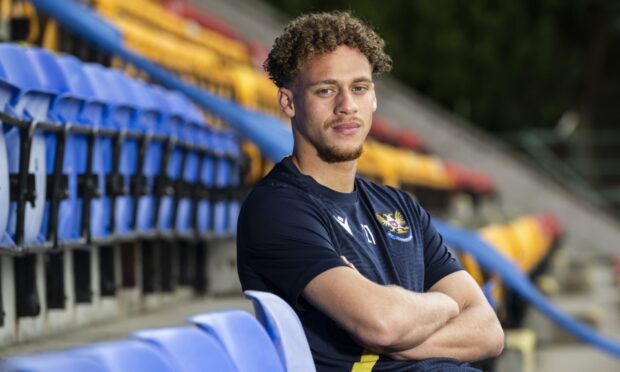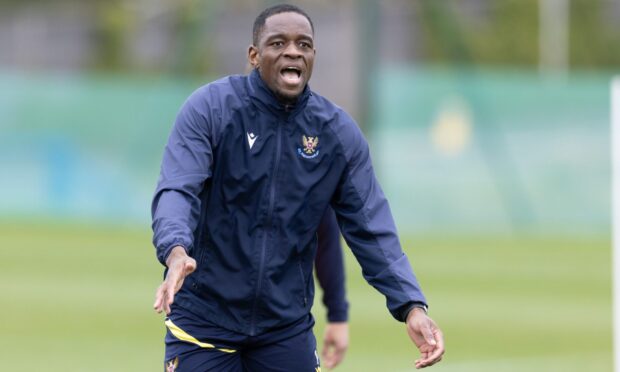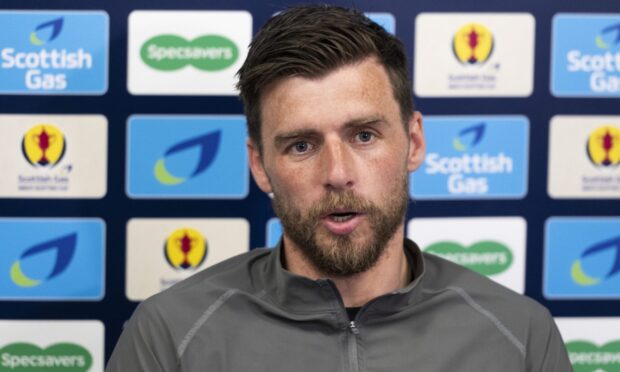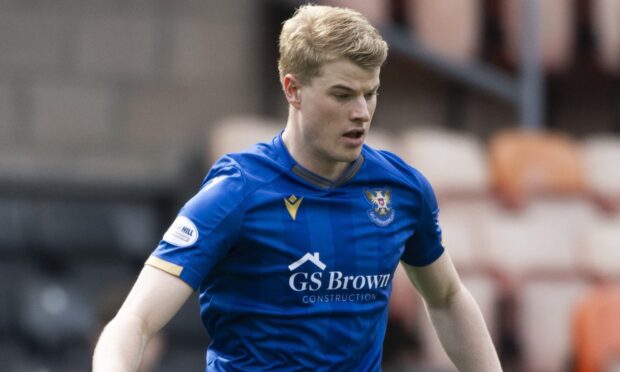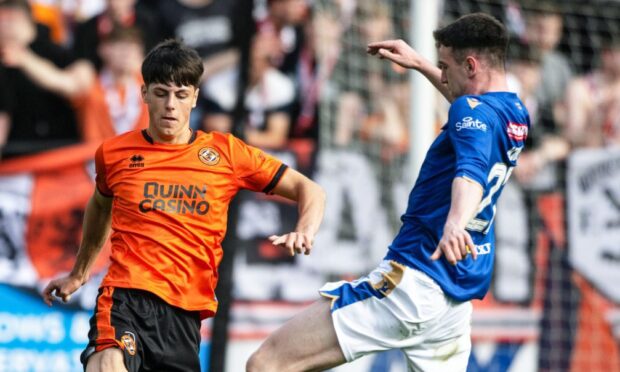Glenn Middleton’s St Johnstone loan has come to an end and the Rangers forward has said his goodbyes.
After what was an incredible season for the club I’d just like to say how grateful and thankful I am for the opportunity to be involved in it all since singing on loan in January. I wish all the boys and the staff all the best for the future! @StJohnstone 💙 pic.twitter.com/4VYPnaR96X
— Glenn Middleton (@Glenn_M22) June 1, 2021
Callum Davidson is keen to bring him back to McDiarmid Park for a full season but it remains to be seen if a deal can be worked out.
What is certain is that Middleton has already secured his place in Saints’ folklore thanks to a free-kick wonder goal in the Scottish Cup semi-final, an excellent performance as a Hampden starter in the final and his late, late strike against Ross County that secured top six Premiership football.
Get this on repeat ♻️#SJFCLive
— St. Johnstone FC (@StJohnstone) May 9, 2021
There is a very strong case to regard the Scotland under-21 international as the best loan signing the club has ever made.
As with any other club, the loan misses for St Johnstone over the years probably outweigh the hits but Eric Nicolson chooses five others who made their mark as short-term recruits.
1 Danny Swanson
Swanson could have been forgiven for thinking he’d made a very bad choice swapping Coventry City for Saints after enduring a nightmare debut against Queen of the South in early February 2015.
In their first game as Scottish Cup holders, Tommy Wright’s men were defeated 2-0, a toiling Swanson was substituted just before the hour mark and snowballs were being flung on to the pitch from the away end.
The former Dundee United man was taken out of the spotlight for a couple of weeks to build up his fitness on the training ground and when he did return it was with a bang.
In his next start, Swanson scored THAT goal at Celtic Park to secure a famous 1-0 victory.
He was back on the scoresheet at Dens Park the following month and by the time Saints secured European football on the last day of the season at Pittodrie, he was a crucial part of Wright’s side.
After returning to Coventry in the summer and then moving to Hearts, the playmaker found his way back to McDiarmid as a permanent signing (twice).
2016/17 was peak Danny Swanson. He scored 15 goals and was the creative focal point of arguably the most attractive football-playing team of the Wright era.
2 Brian Graham
The importance of Brian Graham to St Johnstone’s recent history shouldn’t be overlooked.
Snapped up on a season-long loan from Dundee United in August 2014, Graham’s job required broad shoulders and a bit of ego – filling the boots of Stevie May.
That Jackie McNamara signed off the move after his team had been beaten by Saints in the Scottish Cup final tells you how far out of the picture he was at Tannadice.
Graham was never likely to get anywhere close to May’s incredible goals tally of 27 that earned him his big move to Sheffield Wednesday but 10 over the 2014-15 campaign (nine in the league) was an excellent end total.
Even more importantly, though, he helped bring out the best in the most important forward at the club, Steven MacLean.
Chris Kane’s Pittodrie winner meant Saints finished above United and qualified for the Europa League but Graham’s late equaliser against Inverness Caley Thistle in the penultimate fixture was just as important.
3 James Dunne
Until Middleton produced his Hampden heroics, James Dunne was the trophy-winning exemplar as far as Saints’ loan success was concerned.
When Murray Davidson’s 2013/14 season was ended midway through it, Wright identified the Stevenage midfielder as his temporary replacement.
He scored on his debut at Forfar and produced outstanding performances in the semi-final and final.
Family reasons outweighed footballing ones when he chose not to sign a permanent deal and his career never got close to those heights again.
4 Cillian Sheridan
The big Irishman earns his top five place on the back of two loans spells – successful for different reasons.
The first one was the more impressive in terms of goals.
There were six of them (including two doubles, against Hibs and Aberdeen) in tandem with Kenny Deuchar in the second half of the 2009/10 season, Saints’ first back in the top flight under Derek McInnes.
The Sheridan goal Saints fans will remember best is the stunning opener in a 4-1 demolition of Rangers.
After a season with CSKA Sofia, McInnes was able to recruit him for a full term in 2011/12.
The bare statistics of five goals in 32 appearances might not catch the eye but you have to dig a bit deeper.
This was the season of the SAS partnership with Fran Sandaza and the Saints players will tell you that Sheridan’s unselfish contribution was every bit as crucial as the Spaniard’s predatory instincts.
Sandaza’s subsequent struggles as a Rangers player with no-one of his Perth side-kick’s quality beside him reinforced the point.
5 Alan Kernaghan
That St Johnstone were able to get a player of Alan Kernaghan’s pedigree at the experienced rather than veteran stage of his career (he was 30 when he arrived in September 1997) is a credit to Paul Sturrock’s contacts book and powers of persuasion and the willingness of the former Republic of Ireland international to embrace a different type of challenge to the ones he was used to.
Kernaghan, who had played the best part of 300 games for Middlesbrough and Manchester City, quickly found the McDiarmid Park dressing to his liking.
It was Saints’ first season back in the top division and the Irishman’s ball-playing, positional and organisational attributes helped ensure relegation would never be a worry that season.
Main, McQuillan, Weir, Kernaghan and Davidson was a very effective unit – one of the strongest backlines the club has ever known.
Others would have used this resurgence as a stepping stone to another move down south or to a bigger club in Scotland but Kernaghan had been won over by the charms of Perth club and signed a permanent deal within a few months of arriving.
There was even better to come the following season, when Saints reached the League Cup final and qualified for the Uefa Cup.
